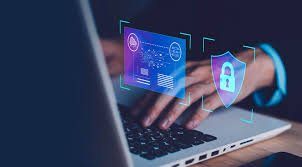In today’s hyper-connected world, cybersecurity isn’t a technical luxury—it’s a business imperative. With ransomware gangs targeting everything from multinational firms to local retailers, and phishing emails becoming increasingly convincing, the cost of neglecting security isn’t just measured in dollars; it’s measured in trust lost, operations halted, and in some cases, businesses shuttered for good. The reality is stark: more than 60% of small businesses don’t survive six months after a serious cyberattack. In this climate, cybersecurity is not optional—it’s existential.
Why Employees Are the Front Line
While it’s easy to imagine cybersecurity as a matter of firewalls and antivirus software, the most common breaches begin with something far less technical: human error. Clicking a malicious link. Using the same password across multiple accounts. Leaving a device unlocked. These are the everyday actions that open the door to attackers.
The solution isn’t just better software—it’s smarter people. Training should go beyond the annual “click-through” compliance module. Phishing simulations, red team exercises, and integrating cybersecurity awareness into onboarding and team meetings can transform employees from potential liabilities into active defenders. Clear, accessible security policies also help—employees are far more likely to follow procedures when they’re straightforward and reinforced regularly.
Passwords and MFA
Password fatigue is real. People are juggling dozens of accounts and understandably fall into bad habits—reusing passwords, storing them in browsers, or defaulting to weak, memorable phrases. But weak credentials are still one of the most common ways attackers gain access.
Rather than relying on users to remember complex strings, businesses should lean on password managers and enforce policies that mandate complexity and regular changes. Multi-factor authentication (MFA) is the second lock on the door, and one of the most effective. Whether it’s a one-time code, biometric scan, or hardware token, MFA drastically reduces the chance that stolen credentials alone will compromise your systems. It’s a simple step that, time and again, has thwarted potential breaches before they could escalate.
Update or Invite Risk: Patch Management
Many high-profile breaches trace back to one root cause: unpatched software. Cybercriminals don’t need to discover new vulnerabilities when old ones are still wide open. Yet many businesses delay updates because they fear disrupting operations.
That’s where automated patch management can help—set schedules that align with your business’s rhythm and review critical updates for high-risk systems. But automation isn’t a set-it-and-forget-it solution. There must be oversight to catch edge cases, particularly with older hardware or unsupported applications. And don’t forget shadow IT—unauthorised tools or apps employees use to “get things done” can quickly become hidden liabilities.
When All Else Fails: Bulletproof Backup Strategies
Even with strong defences, breaches can still occur. That’s why backup and recovery are your business’s digital lifeboat. The 3-2-1 rule remains golden: keep three copies of your data, on two different types of media, with one offsite or offline. This ensures you’re not left helpless if ransomware hits or a system meltdown occurs.
But having backups isn’t enough—you need to test them. Schedule simulation drills that mimic real-world disaster scenarios. Can your team restore operations in hours, not days? Have you accounted for all critical data, including that tucked away in cloud apps or mobile devices? Backups only save the day if you know how to use them under pressure.
Know Where You’re Exposed
Many businesses underestimate their digital sprawl. Laptops, cloud services, mobile phones, third-party tools—each one is a potential entry point. Risk assessments help map out this landscape. A good assessment doesn’t just list threats; it prioritises them based on likelihood and impact.
These insights should flow directly into policy. Define what “acceptable use” looks like, lay out clear BYOD (Bring Your Own Device) guidelines, and set rules around remote access. A policy is only effective if it’s based on how your business actually operates, not just how you think it should.
Firewalls, Antivirus, and Beyond
A solid digital perimeter starts with well-configured firewalls and up-to-date endpoint protection. But not all tools are created equal. Antivirus software remains a staple, but many businesses now pair it with Endpoint Detection and Response (EDR) systems, which provide more advanced threat detection and response capabilities.
Real-time visibility is just as crucial. Centralised dashboards let IT teams—or outsourced providers—monitor for unusual activity across devices and networks. If something goes wrong, the faster you can spot it, the faster you can respond.
Don’t Forget the Physical
Cybersecurity doesn’t end at the screen. An unlocked office door, an unattended USB port, or an unencrypted mobile phone can undo even the most robust digital defences. Physical security and digital security must go hand in hand. Make sure company Wi-Fi is encrypted and hidden, mobile devices are managed centrally, and physical access to sensitive equipment is tightly controlled.
Be Ready for the Worst: Incident Response Planning
When a breach occurs, chaos is not a strategy. A functional incident response plan lays out who does what, when, and how. Detection, containment, communication, and recovery all need to be clearly defined. Legal and PR protocols should be baked in too—mishandling the aftermath can do as much damage as the breach itself.
Run tabletop exercises with your team to test your response. These simulations expose weak spots in your plan and ensure everyone knows their role when it counts.
Continuous Monitoring
Cyber threats don’t sleep. That’s why proactive monitoring is essential. Whether you opt for real-time Intrusion Detection Systems (IDS) or detailed log analysis, knowing what “normal” looks like across your network allows you to spot anomalies fast.
The best setups include baseline behaviour profiling—understanding typical patterns so you can detect subtle shifts that indicate trouble. The faster you catch an intrusion, the less damage it can do.
Align with Proven Frameworks
Rather than inventing your own approach to security, lean on established frameworks like the NIST Cybersecurity Framework. Its five core functions—Identify, Protect, Detect, Respond, and Recover—offer a structured, adaptable approach to cybersecurity. Even small steps toward alignment can improve audit readiness and long-term resilience.
Resources like CISA, industry ISACs, and regional cybersecurity partnerships can help businesses stay current and continually refine their approach.
Final Thoughts: Cybersecurity Is Discipline, Not Drama
Cybersecurity isn’t a project. It’s a practice. The good news? Most breaches stem from a handful of preventable issues—untrained staff, weak passwords, missed updates. Getting these basics right cuts your risk dramatically.
The key isn’t perfection—it’s consistency. Businesses that build a culture of cybersecurity and treat it as a daily discipline are the ones most likely to withstand the next attack. Don’t wait for a crisis to prioritise it. The time to get it right is now.












